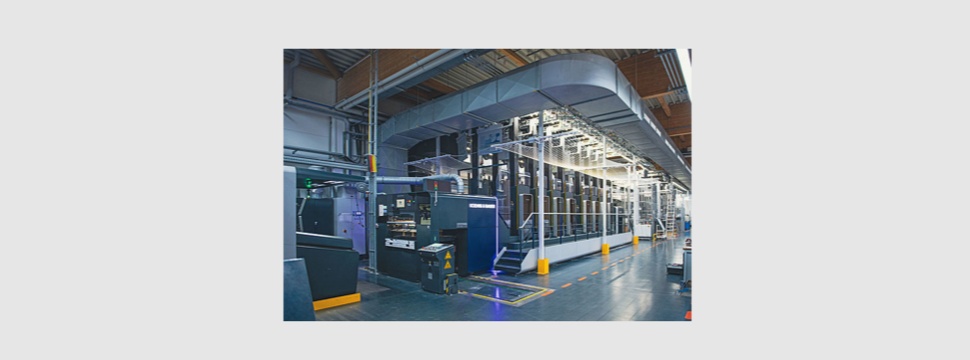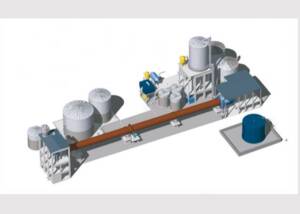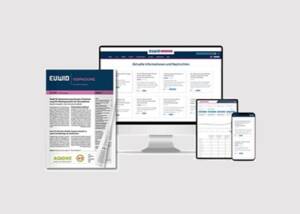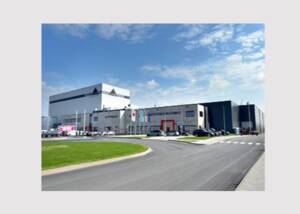Koenig & Bauer equips Rapida sheetfed offset presses with fully automatic plate logistics
News General news
- Integration into medium- and large-format sheetfed offset presses
- No manual operations necessary
- Modular system design for maximum flexibility
- Economical production of increasingly short print jobs

More and more commercial printers are equipping their Rapida sheetfed offset presses with fully automatic plate logistics systems. Web-to-print providers are being particularly active when it comes to doing so. Several Koenig & Bauer systems are already in use in daily practice and further installations are expected to follow.
To date, both medium-format Rapida 106 X presses (max. sheet format 750 × 1,060 mm, production speeds up to 20,000 sheets per hour – including perfecting mode) and large-format models of the Rapida 145 series (max. sheet format 1,060 × 1,450 mm, production speeds up to 18,000 sheets per hour) have been integrated into fully automatic plate logistics solutions. Depending on the particular system and location, they convey up to 1,280 printing plates to the changers on the printing units of an eight-colour press per shift. This number alone illustrates the strengths and potential of plate logistics on modern sheetfed offset presses.
Short print jobs without additional waiting times
In commercial printing with its many short and medium runs in particular, fully automatic plate logistics helps operators to harness the full potential of their highly automated presses. Makeready times are noticeably shorter and the printshop personnel can concentrate on the decisive aspects of the production process and on print quality. An eight-colour perfector press exhibits the accustomed efficiency with fast makeready and 4-over-4 production at maximum speed even when presented with a succession of short-run jobs requiring just 300 sheets each. All plates are in the corresponding printing units right when they need to be. The transfer from the plate logistics module to the simultaneous plate changing system DriveTronic SPC is so precise that manual interventions in operations become a thing of the past.
Modular system enables individual solutions
Thanks to the modular design of its logistics systems, Koenig & Bauer is able to offer practically every conceivable solution for fully automatic plate transport to the plate changers on the press (including subsequently fully automatic plate changing). The following standard modules can be selected to suit the existing printshop installations and the desired level of automation:
- Separation of individual plates and transfer to the transport system
- Plate identification (data matrix)
- Transport to the printing unit
- Plate changing
- Transport to the disposal station
- Disposal of the used plates
In addition, there are various components that cater for special circumstances, for example for the integration of several presses into a single logistics system.
The individual modules are either installed above the press or outside the immediate press area, so as not to hinder the press operators. This means that the Rapida remains fully accessible during plate changes. The printing units are only placed off limits for a few moments by light barriers during vertical plate loading and changing motions.
The transport systems (chain conveyors) can be tailored to the particular requirements of the customer’s printshop. As the plates take different routes during transport to and from the printing units, there is no risk of interference or assignment errors.
To enable uninterrupted production at maximum speed and with short runs, the system holds the plates for the next job right at the printing units. The job sequence is otherwise determined by the order in which the plates are placed on the plate trolley. Any necessary amendments can be realised on the trolley before the individual plates are separated and passed on to the transport system. Before transfer to the chain conveyors, the plates are identified by scanning a data matrix code added to the plate image at the time of exposure. The job list communicated to the console using LogoTronic can be adapted at any time to reflect the actual order of the plates.
Enormous performance capabilities
Few human operators would be in a position to match the performance of a plate logistics system for sheetfed offset presses. They would need to carry plates weighing 110 kg over a distance of 3.2 km over the course of each shift. What’s more, with a run length of 300 sheets, they have barely 3 minutes to remove all the old plates from the eight changers on the press and to replace them with the correct new plates. This workload would soon push even experienced operators to their limits.
The automation of plate loading and then removal to a disposal station permits optimum utilisation of the performance capabilities of the press, especially where very short runs are involved. Short-run production, as is characteristic in the web-to-print segment, can be implemented much more profitably.










